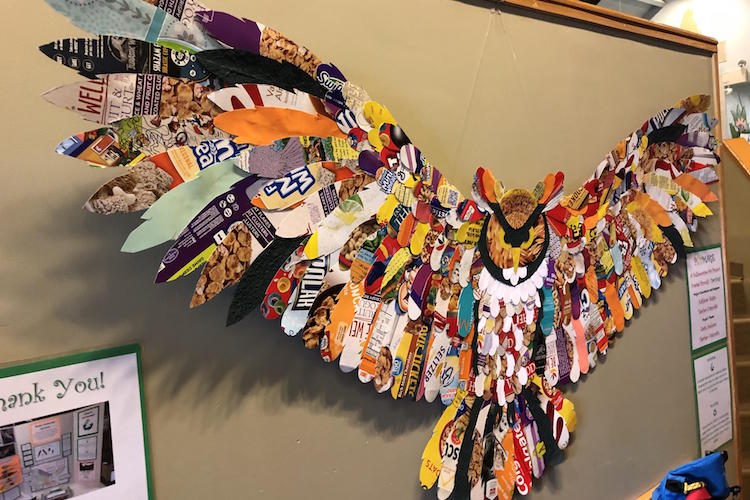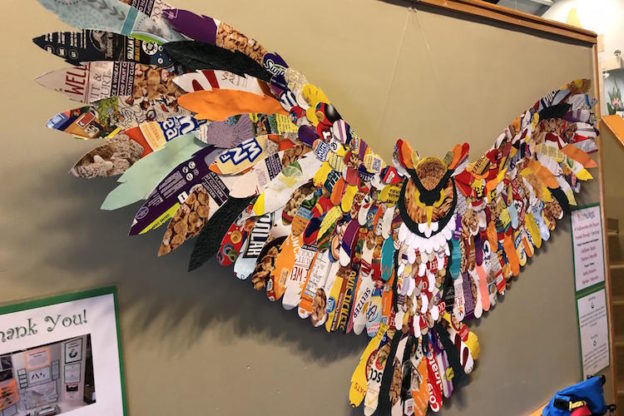Art is silent but powerful, just like an owl’s wings. To kick off Blue Hills Trailside Museum’s very first Owl Festival, which took place on October 13-14, art, imagination, and creativity were combined with science and conservation to create the Plumage Project. The idea for this project was developed by part-time Teacher Naturalist Karin Sanborn, who is an artist among several other avocations.

Plumage Project
Before the event, a call went out for “feathers” created from found materials. An activity station was set up in the museum so visitors could easily participate. One of the focal points for this project was conservation, so raw materials were pulled out of recycling bins. Old cereal boxes and construction paper scraps were “upcycled” and converted into art.
Art Meets Science
Another focal point of the project was science education. Visitors to the museum used feather templates, labeled with names like “primary feather” or “covert feather.” Posters and other visual displays helped visitors explore feathers: the huge variety of shapes, sizes, textures, structures, and functions.
Each feather on a bird’s body is like a piece of a jigsaw puzzle, with a unique shape that will fit no other place on the bird’s body. And each feather has a specific function, which can range from flight to protecting a bird’s eyes from sun and dust. Hundreds of feathers were either created at the museum or dropped off by visitors.
Trailside’s Kathleen Regan provided the sweat needed to complete the assembly of the final product, a larger than life sized representation of a Great Horned Owl. We plan on running future cooperative art projects like this one, combining art, science, and conservation with the goal of helping people connect to nature.
— Perry Ellis, Blue Hills Trailside Museum Teacher Naturalist


